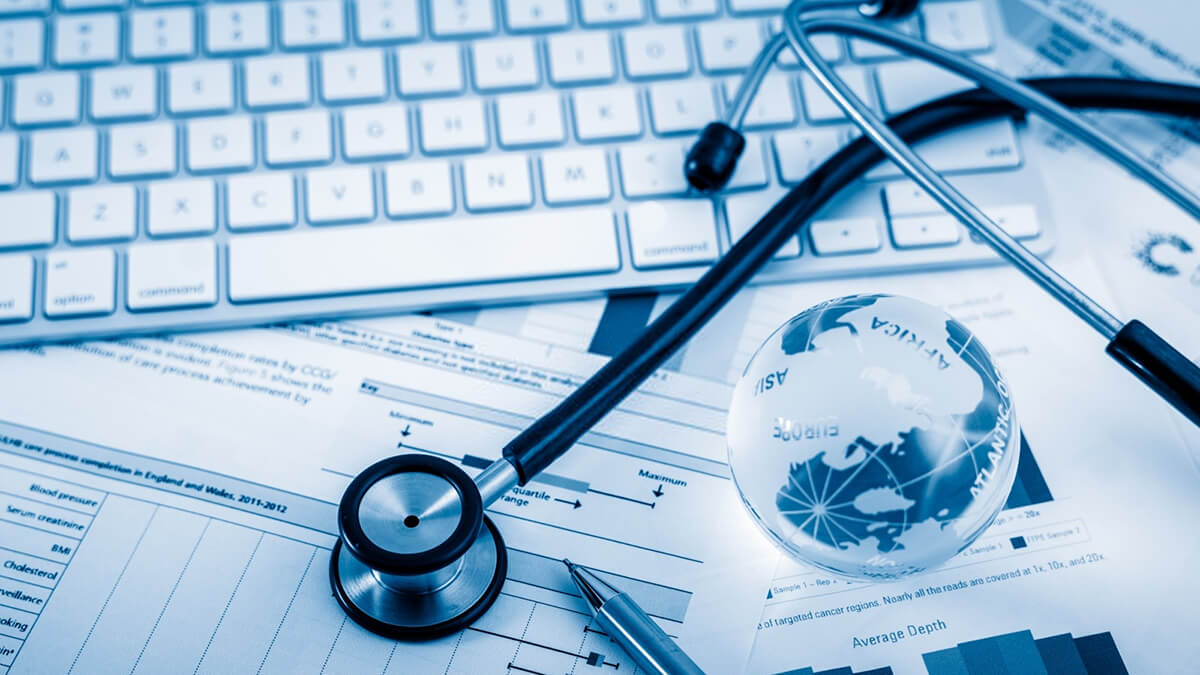Medical Administration Careers: Exploring Work Opportunities and Wages
Medical Administration Careers: Exploring Work Opportunities and Wages
Blog Article
Innovations in Medical Management: Exactly How Modern Technology Is Reshaping Medical Care Management
The landscape of medical care monitoring is going through an extensive makeover, driven by technological improvements in medical administration. Electronic Health And Wellness Records (EHR) have ended up being the foundation of reliable individual data monitoring, while telemedicine bridges ranges, making medical care easily accessible to even one of the most remote areas. Expert system is not just a futuristic principle yet a present-day tool that customizes client treatment and streamlines management jobs. As these technologies take spotlight, a critical concern emerges: how will these innovations additionally redefine the medical care experience for both carriers and people in the coming years?
Evolution of Electronic Health Records
Over the previous few years, the development of digital wellness records (EHRs) has actually substantially changed the landscape of medical management. Created to digitize individual records, EHRs have broadened past their initial range to end up being integral tools in improving health care procedures, improving client care, and boosting management performances. The transition from paper-based systems to EHRs has actually lowered redundancies, decreased mistakes, and helped with seamless information sharing throughout different doctor, therefore making it possible for comprehensive and worked with person care.
EHRs have presented a paradigm shift in health care administration by incorporating medical, administrative, and monetary information, hence permitting even more educated decision-making. The access of real-time person data encourages health care experts to make prompt diagnostic and therapy decisions, better improving person end results. In addition, EHRs support the application of evidence-based practices by providing access to the most up to date clinical research and treatment guidelines straight within the scientific process.
The government motivations and laws have actually sped up EHR adoption, guaranteeing conformity with requirements that protect individual personal privacy and information safety and security. As the healthcare sector proceeds to welcome electronic change, EHRs remain at the leading edge of innovation, driving effectiveness and enhancing the total quality of health care shipment.
Improvements in Telemedicine
Telemedicine has actually swiftly progressed in recent times, essentially changing the means medical care services are delivered. This change is greatly credited to technological developments that have actually increased accessibility to treatment, specifically for people in remote or underserved locations. Telemedicine systems facilitate real-time consultations in between people and doctor, consequently lowering the demand for in-person brows through and significantly lowering delay times.
The integration of video conferencing, mobile health applications, and remote monitoring devices has actually boosted the extent of telemedicine. Individuals can now handle chronic conditions with continuous monitoring, receive prompt appointments, and access expert care without geographical constraints. This shift has not just better individual satisfaction yet has actually also optimized medical care process and resource allocation.
In addition, telemedicine has actually played an important function in public health, specifically throughout pandemics, by reducing the risk of transmittable illness transmission. Regulatory innovations have actually even more sustained telemedicine's expansion, with many nations revising plans to allow wider insurance protection for virtual visits.
In spite of challenges such as electronic literacy and information safety and security, the recurring site advancement of telemedicine assures to sustain its trajectory as a keystone of contemporary medical care administration, supplying a much more obtainable and efficient medical care delivery design.
Artificial Knowledge in Medical Care
Building on the technological developments seen in telemedicine, synthetic intelligence (AI) is swiftly becoming a transformative pressure in medical care administration. AI innovations provide significant enhancements in performance, accuracy, and decision-making abilities. Among one of the most compelling applications of AI in healthcare is predictive analytics, which makes it possible for medical care administrators to expect person needs, Read More Here improve source appropriation, and boost patient results. By examining huge datasets, AI formulas can identify patterns and predict prospective wellness crises, enabling proactive intervention.

Another significant application is in tailored medicine, where AI aids in tailoring therapies to individual client profiles by evaluating genetic, way of life, and environmental aspects (medical administration). As AI remains to progress, its assimilation into medical care administration guarantees to enhance operations, minimize prices, and eventually boost the quality of care given
Enhancing Data Safety Actions
In the digital age, protecting client information has come to be an essential priority in medical management. As medical care organizations progressively depend on electronic systems for managing client data, the demand for durable information safety and security procedures has actually expanded significantly. Information breaches not just jeopardize client privacy however also lead to considerable financial losses and damage to institutional track records. Subsequently, the combination of sophisticated safety methods is critical.
Health care institutions are applying multi-layered safety and security frameworks to alleviate risks. Security innovations guarantee that delicate information stays inaccessible to unapproved users, both during transmission and storage space. The adoption of blockchain innovation offers an appealing method for enhancing data honesty and traceability, providing an immutable document of all transactions.

Educating team on cybersecurity best practices is equally vital. Understanding programs outfit medical care personnel with the knowledge to recognize and report potential threats, such as phishing attempts. By prioritizing data security, medical managements can protect patient information and maintain trust.
Improving Patient Communication Equipment
While durable information safety procedures are essential in securing individual information, similarly crucial is the improvement of client communication systems to ensure efficient health care delivery. In the developing landscape of healthcare administration, technological advancements are playing a pivotal role in transforming exactly how doctor communicate with individuals. Reliable communication systems not just boost patient More hints contentment but also improve medical end results by making certain timely and exact info exchange.
One of the substantial developments in this area is the combination of electronic wellness records (EHR) with person websites. This assimilation enables people to access their medical details safely, routine consultations, and interact with doctor efficiently. In addition, the use of telemedicine systems has actually broadened accessibility to healthcare services, specifically for those in remote areas or with flexibility challenges. These systems facilitate real-time examinations, reducing the requirement for physical visits and allowing continual care administration.
Moreover, fabricated intelligence-powered chatbots are being increasingly used to provide instantaneous feedbacks to individual inquiries, supplying a seamless interaction experience. By leveraging these technical developments, doctor can promote even more tailored person communications, inevitably bring about boosted person involvement and adherence to therapy strategies.
Final Thought
Telemedicine increases healthcare availability for remote populations, while synthetic intelligence automates jobs and customizes patient interaction. Collectively, these improvements drive efficiency, lower costs, and boost the quality of medical care delivery, reshaping business procedures in the health care field.
Report this page